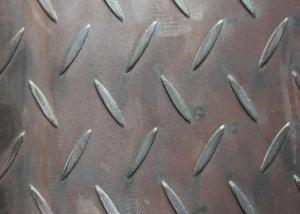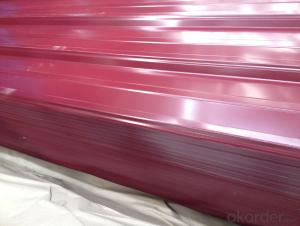color bond surface coating steel plate--XY016
- Loading Port:
- China Main Port
- Payment Terms:
- TT OR LC
- Min Order Qty:
- -
- Supply Capability:
- -
OKorder Service Pledge
OKorder Financial Service
You Might Also Like
1. Color bond surface coating steel plate :
More than ten years experiences, the products are sold to the domestic city and some international cities we strivc to develop production of color coating steel plate the plating (aluminum )zinc steel. Coil cheickness between 0.6mm and 1.5mm and the width from 600mm to 1250mm and a variety of high durability of color coating steel plate.
2.The company has multiple layer patterns for customers to choose The company provides products deep processing services ,meet the various needs of customers on board specifications All of out products comply with international quality standards and are greatly appreciated in a variety of different markets throughout the world if you ate interested in any of our products or would like to discuss a custom order please feel free to contact us we are looking forward to forming successful business relationships with new clients around the world in the near future.
3.We can design the color and thickness according to customers' requirements. The delivery time is only 30 day after you confirm the order.
- Q: What are the different types of steel sheet patterns?
- There are several different types of steel sheet patterns, including diamond, checker, and raised patterns.
- Q: What is the hardness of the steel sheets?
- The hardness of steel sheets can vary depending on the specific grade and manufacturing process, but generally, steel sheets have a high hardness level due to their strong composition.
- Q: What is steel concrete?
- The steel reinforced concrete structure for steel reinforced concrete in Japan (two, u, iron and iron bars, a}) structure. In Europe and the United States known as the concrete steel structure (SteelEnc, ED, Concrete) structure, in the former Soviet Union is known as the reinforced concrete structure. According to different forms of steel distribution, SRC structures can be divided into two types: solid steel, steel reinforced concrete and seamless steel reinforced concrete. At present, the solid steel reinforced concrete members are often used in seismic structures, and the typical section forms of solid steel concrete columns, beams, shear walls and joints are commonly used.
- Q: What are the different types of steel sheet alloys?
- There exists a range of steel sheet alloys, each possessing distinct properties and applications. Among the most prevalent steel sheet alloys are: 1. Carbon Steel: This variety, composed primarily of iron and carbon, serves as a fundamental form of steel. Its notable strength and affordability render it extensively used in the construction, automotive, and manufacturing sectors. 2. Stainless Steel: Distinguished by its resistance to corrosion, stainless steel is produced by introducing chromium and other alloying elements to carbon steel. It finds common employment in environments where hygiene and durability hold significance, such as kitchen appliances, medical equipment, and architectural structures. 3. Galvanized Steel: To protect against corrosion, this type of steel is coated with a layer of zinc. Galvanized steel sheets find frequent application in outdoor settings, including roofing, fencing, and automotive components. 4. Alloy Steel: Alloy steel sheets are created by incorporating diverse alloying elements, like nickel, chromium, and molybdenum, into carbon steel. These alloys heighten the strength, hardness, and wear resistance of the steel, rendering it suitable for industries such as aerospace, automotive, and machinery. 5. Tool Steel: This steel variety is specifically engineered for the production of tools and dies. It distinguishes itself through high hardness, resistance to deformation, and the ability to retain sharp edges. Tool steel sheets are commonly employed in the manufacturing of cutting tools, drills, and molds. 6. Electrical Steel: This steel undergoes specialized processing to minimize magnetic losses and enhance electrical conductivity. Electrical steel sheets are utilized in the production of transformers, electric motors, and generators. These examples represent merely a fraction of the diverse steel sheet alloys accessible. Depending on the specific requirements of a project or application, engineers can opt for the appropriate alloy to achieve the desired properties and performance.
- Q: What is the typical weight of steel sheets?
- The typical weight of steel sheets can vary depending on the thickness and dimensions of the sheet. However, a commonly used gauge for steel sheets is 16 gauge, which typically weighs around 40 to 50 pounds per square foot.
- Q: Are steel sheets resistant to UV radiation?
- No, steel sheets are not resistant to UV radiation.
- Q: How do steel sheets perform in terms of vibration resistance?
- Due to their high stiffness and density, steel sheets generally exhibit excellent vibration resistance. The strong and rigid structure of steel enables it to effectively dampen vibrations, thereby enhancing its ability to resist a wide range of vibrations and minimize their amplification, a quality that is not found in other materials. Moreover, steel sheets can be further improved in terms of vibration resistance by employing techniques like incorporating damping materials or utilizing special coatings. As a result, steel sheets are widely regarded as a dependable option for applications that demand vibration resistance.
- Q: Are steel sheets suitable for architectural cladding?
- Architectural cladding can indeed utilize steel sheets. Steel possesses durability and versatility, offering an array of advantages for cladding applications. Its strength and rigidity enable it to withstand harsh weather conditions, including strong winds, heavy rain, and snow. This durability ensures that the cladding will endure for many years without requiring frequent maintenance or replacement. Additionally, steel sheets provide a sleek and modern aesthetic to buildings. They can be finished in various ways, such as painting, powder coating, or applying a metallic finish, allowing for limitless design possibilities. Steel cladding can achieve a contemporary or industrial look, making it a favored choice for both commercial and residential structures. Steel sheets are also highly resistant to fire, pests, and rot, making them a safe and long-lasting option for cladding. Furthermore, they are relatively lightweight, which can reduce construction costs and simplify installation. Furthermore, steel is an environmentally friendly material. It is recyclable, making it a sustainable choice for cladding. Steel cladding can also enhance energy efficiency by providing better insulation and reducing heat transfer, resulting in reduced energy consumption for heating and cooling. In conclusion, steel sheets are a suitable choice for architectural cladding due to their durability, aesthetic appeal, safety features, sustainability, and energy efficiency benefits.
- Q: What are steel sheets made of?
- Steel sheets are made of iron and carbon, along with other elements such as manganese, silicon, and sulfur.
- Q: What is the average thermal expansion coefficient of steel sheets?
- The specific type of steel and its composition determine the average thermal expansion coefficient of steel sheets. Nonetheless, a widely accepted approximation for the thermal expansion coefficient of steel sheets is approximately 12 x 10^-6 per degree Celsius (12 parts per million per degree Celsius). It is pertinent to mention that this approximation may slightly deviate depending on the grade and composition of the steel utilized.
Send your message to us
color bond surface coating steel plate--XY016
- Loading Port:
- China Main Port
- Payment Terms:
- TT OR LC
- Min Order Qty:
- -
- Supply Capability:
- -
OKorder Service Pledge
OKorder Financial Service
Similar products
Hot products
Hot Searches
Related keywords
























